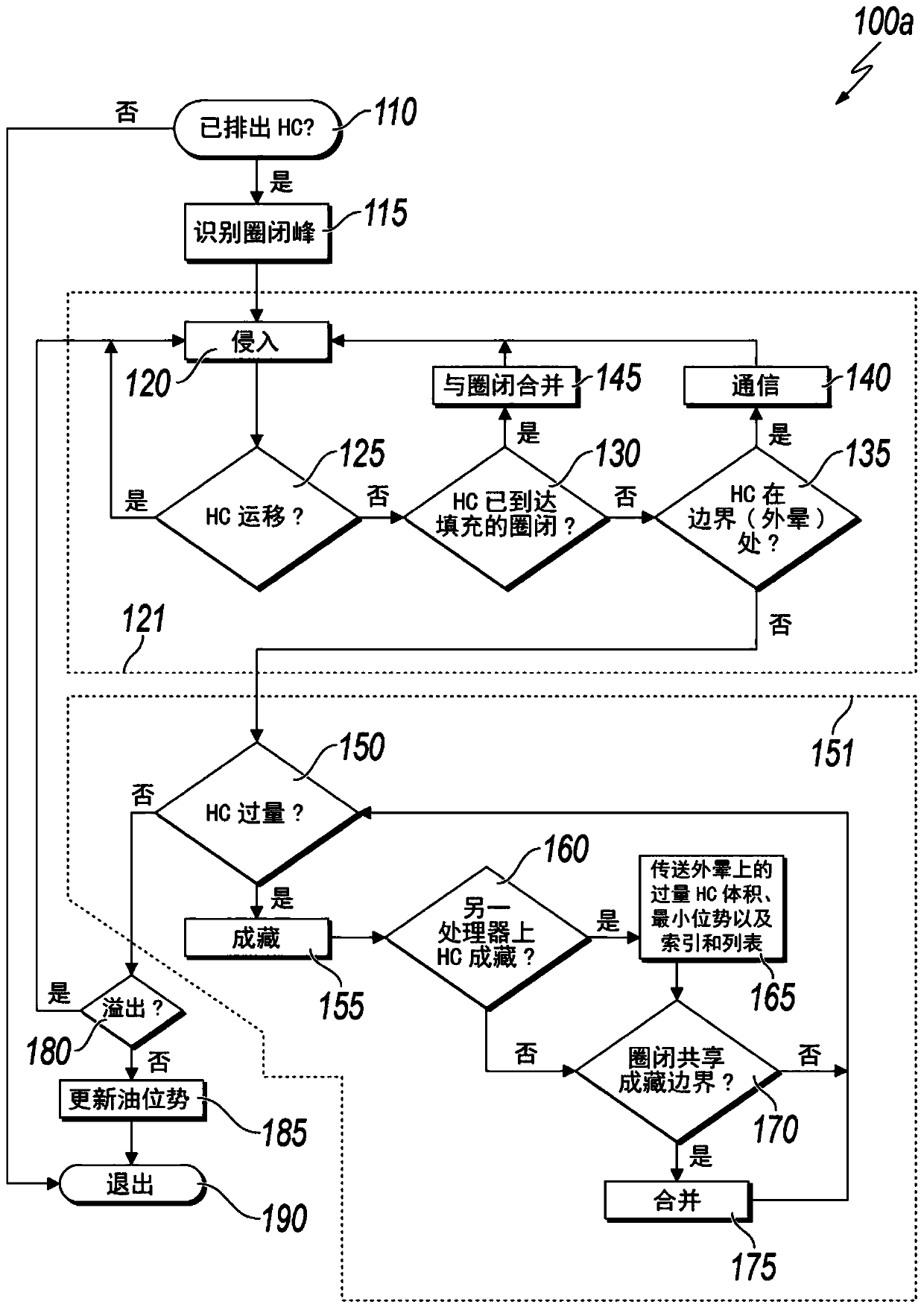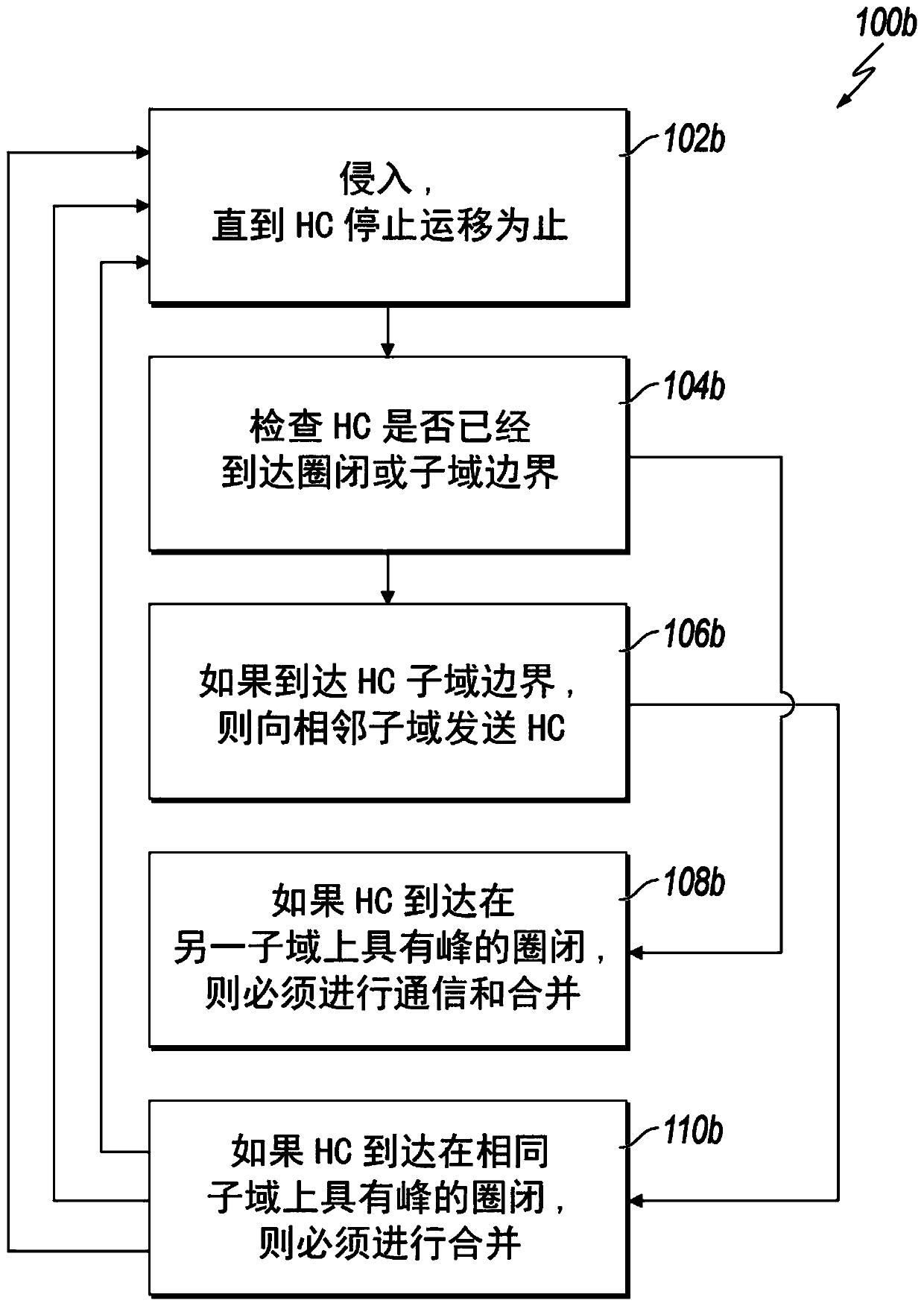Parallel-processing of invasion percolation for large-scale, high-resolution simulation of secondary hydrocarbon migration
A parallel processing and migration technology, applied in special data processing applications, geographic modeling, geophysical measurement, etc., to achieve enhanced computing performance and scalability, and short running time
- Summary
- Abstract
- Description
- Claims
- Application Information
AI Technical Summary
Problems solved by technology
Method used
Image
Examples
test Embodiment 1
[0151] The model used consisted of 135 grid cells in the x direction and 135 grid cells in the y direction with 82 strata, resulting in a model of size 1,494,450 grid cells. The areal grid size is 2 kilometers (km) in both the x and y directions, covering a surface area of 73,000 square kilometers (km 2 ). The simulation run started with the first stratigraphic deposition 550 million years ago (Ma) and used a known kinetic model. The model's lithofacies were simplified to use only two types; one rock type as the seal and another rock type for the rest of the formation.
[0152] go to Figure 8 , Figure 8 is an image 800 showing the results after running the test case 1 model on a single compute core according to the implementation. As shown, the color of the transition ratios ranges from red (eg, 805) to light blue (eg, 810), indicating transitions from larger to smaller, respectively. The conversion ratio indicates how much kerogen has reacted and matured to produce H...
test Embodiment 2a
[0156] Test Case 2a: Coarse Mesh Model
[0157] The second model consisted of 535 grid cells in the x direction and 505 grid cells in the y direction with 82 strata, resulting in a model of size 22,154,350 grid cells. The area grid size is 2km in both the x and y directions, covering a surface area of 1,080,700km 2 . Similar to Test Case 1, the simulation run begins with the first stratigraphic deposition at 550 Ma ago and uses the same kinetic model. Also, the lithofacies of the model was simplified to use only two types: 1) one rock type as the seal and 2) another rock type for the rest of the formation.
[0158] back to Figure 12 , Figure 12 is an image 1200 showing the results from a serial run of test case 2a according to the implementation. Dark green grid cells (such as grid cells at 1205 and 1210) show accumulation saturation (volume). Colors ranging from red (eg 1215) to blue (eg 1220) show transition ratios as previously described.
[0159] The ability to ...
test Embodiment 2b
[0164] Test Case 2b: Fine Mesh Model
[0165] To show that this method can be used to run very large-scale high-resolution basin models, the grid size of Test Case 2b was refined to have 4,273 grid cells in the x-direction and 4,033 grid cells in the y-direction, There are 82 strata, resulting in a model of size 1,413,106,738 grid cells. All other characteristics of the model remained the same, and the model was run on 1,000 compute cores, using 14 processors per compute node.
[0166] go to Figure 15 , Figure 15 is an image 1500 showing the results of running the model of test case 2b using 1000 compute cores according to the implementation. It can be seen that the indicated trap locations are consistent with the coarse mesh test case 2a model ( Figure 14B )quite. However, many smaller indicated traps that were suspected to be artifacts due to the low-resolution coarse mesh in test case 2a disappeared in test case 2b. In one implementation, the parallel simulation pr...
PUM
 Login to View More
Login to View More Abstract
Description
Claims
Application Information
 Login to View More
Login to View More - R&D
- Intellectual Property
- Life Sciences
- Materials
- Tech Scout
- Unparalleled Data Quality
- Higher Quality Content
- 60% Fewer Hallucinations
Browse by: Latest US Patents, China's latest patents, Technical Efficacy Thesaurus, Application Domain, Technology Topic, Popular Technical Reports.
© 2025 PatSnap. All rights reserved.Legal|Privacy policy|Modern Slavery Act Transparency Statement|Sitemap|About US| Contact US: help@patsnap.com



